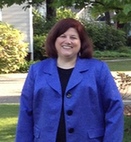Moon rich in natural resources, experts say
中国日报网 2013-12-17 10:15

With the landing of China's lunar probe Chang'e-3 on the moon, experts have begun to calculate the wealth of resources that lies beneath the lunar surface.
"The Chang'e-3 probe's successful soft landing and the operations of the lunar rover Yutu mark a new chapter in man's exploration of the moon, a stride in China's scientific and technological capabilities, and a concrete step toward the peaceful development of the moon," said Wang Ya'nan, deputy editor-in-chief at Aerospace Knowledge magazine.
Wang said the moon has abundant mineral resources including titanium, silicon and aluminum.
"The most valuable is helium-3, an ideal fuel for future nuclear fusion power plants. There is an estimated 15 to 20 metric tons of helium-3 on Earth to be exploited, but the reserve on the moon is at least 1 million metric tons," he said.
Nuclear reactors fueled by helium-3 will be much cleaner and greener than today's fission-based plants, which consume uranium, Wang said.
He cited a NASA report that a fusion power reactor using helium-3 and deuterium, which can be extracted from seawater, will generate only a very small amount of radioactivity, equivalent to that produced by the radiological medicine departments of hospitals. Used in such a plant, helium-3 would produce so much energy that only 20 tons would be needed to supply all the electricity used in a large nation in a year.
Another clean and effective source of power would involve the collection of solar energy on the moon's surface for transfer to Earth, Wang said.
The lack of air on the moon means that solar panels would be exposed to much more intense sunlight, unobstructed by the filtering effects of atmospheric gasses, cloud cover and other weather events, said Wang.
The absence of an atmospheric layer on the moon also makes it an ideal place to conduct space observation. Without the interference of man-made electromagnetic signals, lights and natural elements such as rain and clouds, lunar observatories could take clearer images and send signals further into space.
(中国日报网英语点津 Helen 编辑)

About the broadcaster:

Anne Ruisi is an editor at China Daily online with more than 30 years of experience as a newspaper editor and reporter. She has worked at newspapers in the U.S., including The Birmingham News in Alabama and City Newspaper of Rochester, N.Y.

















 英语点津微信
英语点津微信 双语小程序
双语小程序